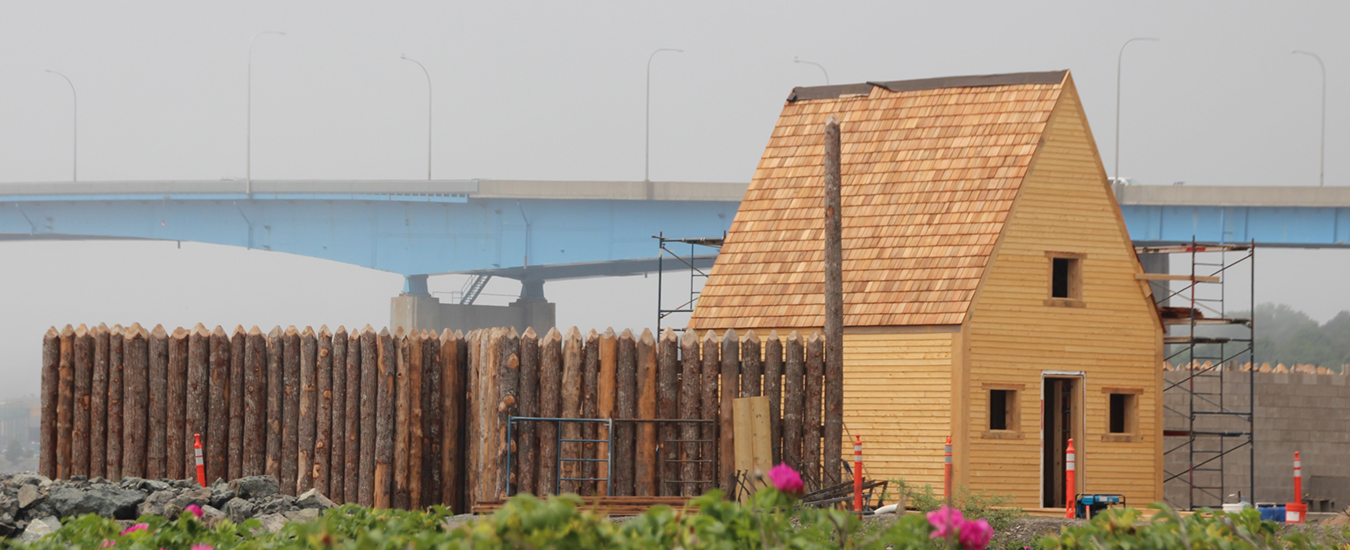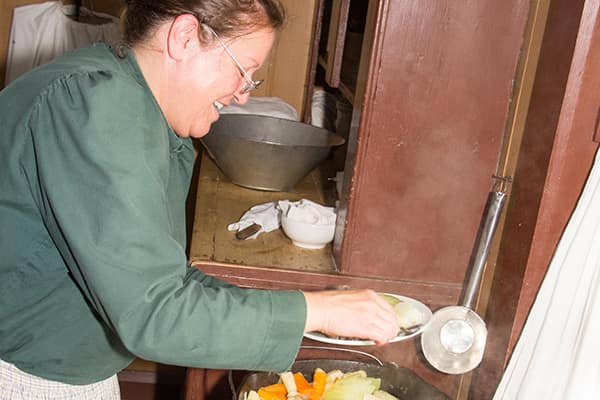Outdoor adventures in an otherwise urban setting
Story and photography by Darcy Rhyno
Jim Donahue and Pete Lavigne steady the kayak as I climb into it. I secure the spray skirt, grab the paddle and give the all clear. Donahue and Lavigne give me a push, and off I go, paddling out from the Bay Shore Beach across the railway tracks at the bottom of Sea Street in Saint John, NB, on to the sun-splashed Bay of Fundy.
Professional firefighter Lavigne and retired sales agent, Donahue are guides with River Bay Adventures, and excellent paddlers. It’s not long before they’ve launched and caught up to me. We’re heading for Partridge Island, the mysterious wedge of green at the mouth of the harbour. It’s a pleasant paddle on such a calm, sunny day. As we approach the island, we see rocky outcrops plunging into the sea, scrubby woods across the island’s length and manmade structures—a lighthouse, a few ruined buildings and a tall Celtic cross towering over all.
We round the outer shores of the island before landing on its far side that faces the city. Once we pull our kayaks far up on the shore, well out of the reach of the water (a sound idea, given that the tides here are some of the highest in the world) Donahue gives me a short history of Partridge Island.
Before Europeans arrived, it was called Quak’m’kagan’ik in the Mi’kmaq language, which translates as “piece cut out.” According to indigenous legend, the great god Glooscap destroyed a dam at the reversing rapids near the mouth of the Saint John River, which is nearly visible from where we’re standing. The rushing water carried a piece of the dam into the bay, creating this island.
Today, it’s uninhabited and quickly returning to nature, but it was once Canada’s version of Ellis Island, operating as a quarantine station from 1785 well into the 20th century. That large cross we saw at a distance was erected in 1927 to commemorate the many who died here of typhus in the mid 19th century as refugees fled from the Irish potato famine and other threats.
Through many wars, the island served as the first line of defence for the city. Because of so much human activity over the centuries, it’s riddled with underground bunkers, the remains of gun mounts and of buildings that once served as everything from hospitals and schools to radar observation posts and military batteries. It last served as a quarantine station in 1941.
Embracing urban wilderness
For a city founded on industry that’s still very much a part of everyday life, Saint John boasts unexpected riches when it comes to outdoor adventure and large, green spaces all around the city core. In fact, the chance to experience the natural side of Saint John in the middle of an urban, even industrial setting makes outings like this even more attractive to outdoor enthusiasts like Lavigne and Donahue.
“It’s a beautiful cityscape to me,” Donahue says, looking across the short harbour to the city centre. “It’s beautiful. I can see five church steeples.”
We can also see a barge with dredging equipment, working on deepening the channel. There’s an oil refinery, seaport docks and on the other side of the highway a paper mill. Across the water come the sounds of a busy port—the horn blast of a departing ship, the hum of large machinery, a siren. Donahue admits to having fun with his clients when it comes to interpreting some of what they’re seeing from their kayaks or from here on the island. Of a large Quonset hut on the waterfront, Donahue jokes with some that it’s used to store salt for when tests show the ocean isn’t salty enough.
“Instead of embracing what it is,” Lavigne says, “the biggest problem here in Saint John is there’s a form of self loathing, always wishing it could be something else. You have to be willing to enjoy it for what it is.” Sweeping his hand over the scene in front of us to indicate the island beyond this overgrown trail head, Lavigne adds, “I think it’s an amazing little spot.”
Opportunities for adventure
While Saint John boasts larger parks within its urban boundaries than many other cities, in a way, the reverse is also true. The city itself is set entirely within a park, the Stonehammer Geopark, North America’s first UNESCO recognized geopark. It’s a massive 2,500 square kilometre swath of southern New Brunswick of very old geological features, dating back half a billion years. Most of the outdoor activities in and around Saint John take place in characteristic Stonehammer landscape.
To take advantage of these natural riches, Saint John has an unusually large collection of outdoor adventure companies. SeeSight Tours offers a harbour tour, but it’s their jet boat ride through the reversing rapids that provides the most thrills. It’s a wet and wild high speed ride at the place where Glooscap broke that dam. Twice a day, the water direction here reverses course with the rising and falling tides, forcing the rapids to flow one way, then the other. Other companies offer fishing excursions, zodiac tours, sea cave exploration, ziplining and treetop adventures.
Rockwood Park just on the other side of the highway from downtown is within the Stonehammer boundaries and dates back to the 19th century when none other than Calvert Vaux, one of the designers of New York City’s Central Park, was brought in because he saw the need in industrial cities like Saint John for large, open green spaces where people could take their leisure and connect with nature. Like Central Park, Rockwood has a zoo and waterways, but it also offers supervised swimming, hiking, golf, horseback riding and camping.
The Inside Out Nature Centre helps people get active in Rockwood Park with paddle board instruction and rentals, guided kayaking tours of Lily Lake in search of fossils, hiking excursions to explore Stonehammer geological features, rock climbing on ancient outcrops and a guided biking tour that takes in many of the city’s landmarks, lookouts and wild spaces. The three-hour excursion on two wheels starts at Lily Lake Pavilion in Rockwood and includes the newly reconstructed Fort LaTour, the reversing rapids and Moosehead Brewery. There, the group takes a beer break before heading back along Harbour Passage through the Public Gardens to the starting point in Rockwood.
Kids can’t get enough of Inside Out’s whackier activities like zorbing and bubble soccer. Both involve climbing into a giant inflated see-through bubble and either rolling around like a hamster in a plastic ball or trying to play soccer and bouncing off opponents instead. Both involve a whole lot of tumbling around harmlessly while laughing very hard.
On the edge of town, the 600-acre Irving Nature Park is the destination for those who really want a touch of unspoiled wilderness within city limits. Boardwalks lead to woods, marshes and beaches for some great bird watching and even seal watching. The observation tower on Squirrel Trail is the best vantage point to look out over the trees and to the rocks and mudflats beyond. That’s where the seals hang out and where shore birds gather in the thousands during late summer migration.
Looking back
Back on Partridge Island, Lavigne and Donahue lead the way along an overgrown trail, past old foundations—some of them with trees and plants growing out of them—to emerge on a hilltop beside that lighthouse we spotted from the water. The view of the city isn’t bad from up here, but it’s partially blocked by the trees that have grown up over the decades. From here, we can see the radar observation tower. Someone has hung a Canadian flag from the top.
We make our way along more paths through the trees and shrubs to the radar tower. From the top, the views are uninterrupted. We can see the breakwater of boulders that has linked the island to the mainland since it was built during World War II for submarine defence.
Beyond the Celtic cross and the lighthouse, the city looms and hums in the distance—Donahue’s beautiful cityscape. As Lavigne would have it, we embrace the view for what it is, a part of the city gone wild in an otherwise urban setting. Just then, as if to emphasize the contrast between the two, an enormous cruise ship drifts past, appearing to us as if its equal in size to the island—wilderness and a floating city side by side.
Intro caption: Jim Donahue and Pete Lavigne, guides with River Bay Adventures, approaching Partridge Island.
Header caption: Fort La Tour.



